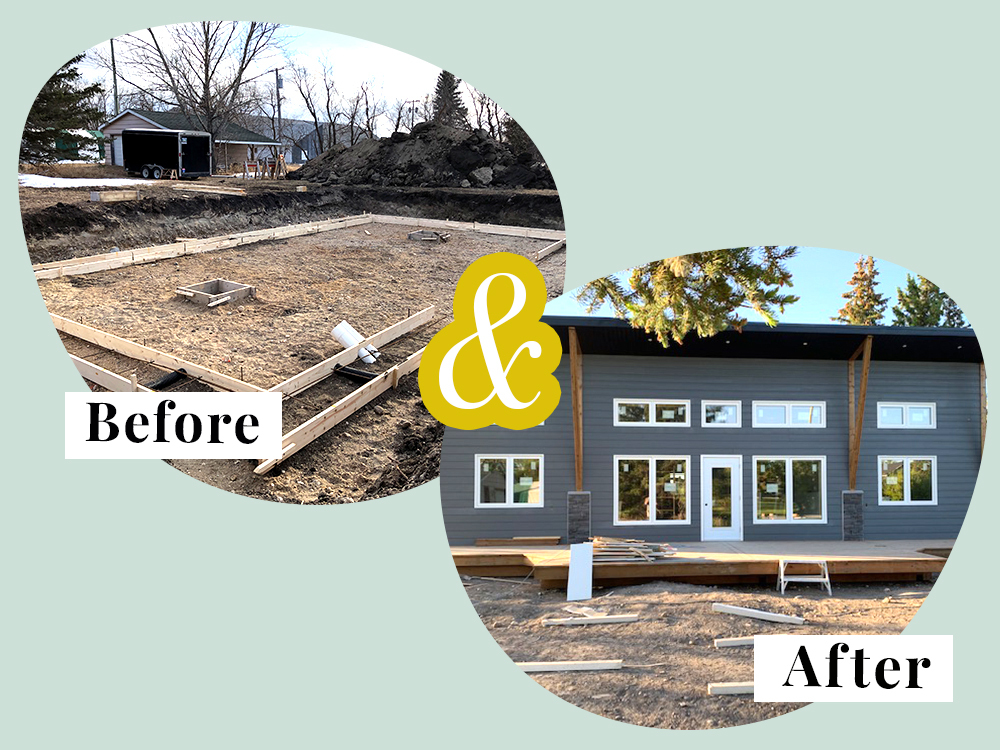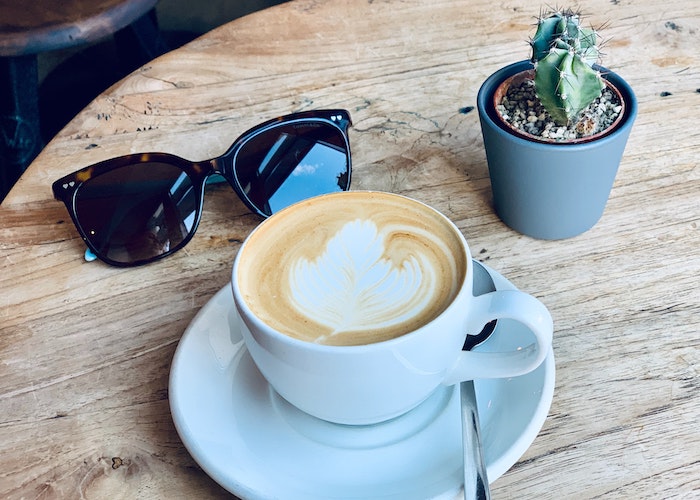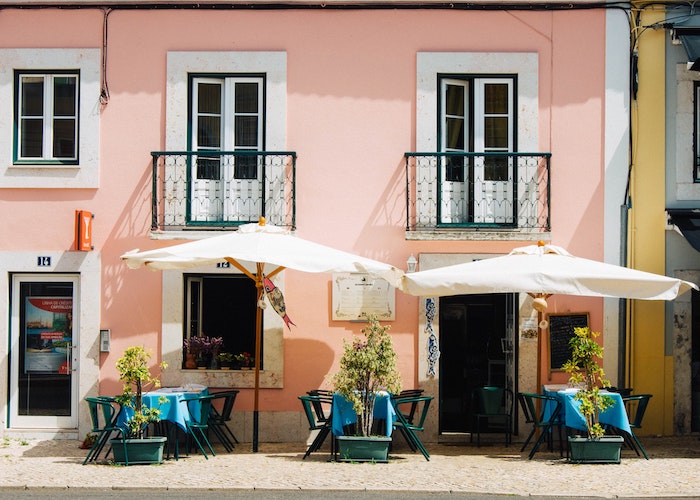An Amateur Guide To Apartment Gardening When You Have Very Little Time & Money

Does anyone else have serious garden envy? Every time I walk by a home littered with bright snapdragons and ivy, I think to myself: one day. Now that spring has sprung, I’m spending spare time in the Botanical Gardens near me and wistfully dreaming of the commune I’ll one day start, complete with a beehive, chicken coup, and an overwhelming need to act like a stand-offish hermit. Hey, a girl can dream.
But just because our generation isn’t known to have access to sprawling backyards doesn’t mean we can’t grow our own gardens! I’ve mentioned before that part of my efforts towards minimizing my carbon footprint included container gardening, and here’s how I manage to keep my plants alive and well.
Why Start a Garden?
I’ve been balcony-gardening since 2014, and have found some benefits throughout the years. It’s a fairly low commitment — watering plants takes all of two minutes, once or twice a week — but makes a difference in my day-to-day. I’m slowly but surely building an arsenal of edible goodies, and even without the tease of a zombie apocalypse, it means I’m wasting less food and money when I need just a bit of one thing or another. I mentioned my carbon footprint is just a bit smaller, since I’m able to compost food scraps and add them to the garden, or reuse produce scraps and replant them.
Plus, honestly, it just makes a small space feel more like home. Having flowers growing in spring, or big green leaves in front of an otherwise treeless view, makes a difference in my personal happiness. It’s also a bit of a confidence boost: I can keep this thing alive. I’m amazing.
Decide Where You Can Grow
My garden has moved with me several times in the last few years, but each new home has led to the same question: where’s the light? Some plants can thrive without direct sunlight — hell, some demand indirect sunlight only — but you need to know what you’re working with. I walk around my new home and look for bright spots by the windows, and hopefully a balcony or some outdoor space.
Check each spot throughout the day. Your outdoor space may get a healthy 6+ hours of sun, or your neighbor’s house may block all but 2-4 hours of sun. This will dictate what type of plants will thrive in your space. And unless you have a sunroom with skylights and windows on each side, you probably won’t get 6+ hours of direct sunlight indoors. That’s ok! Work with what you have.
Decide What You Can Grow
Sunlight isn’t the only thing that dictates what will thrive in your soon-to-be garden. If you’re going to start growing herbs and goodies indoors, you’ll have a bit more control over the environment. If you’re growing outside, consider your climate. You don’t have to get super scientific with it, but if you match your plants to your environment, you’re going to have an easier time. Location matters! Check out which Grow Zone you’re in if you’ll plant outdoors.
Get Your Containers
This will come as a shock, but I don’t believe in spending a lot of money for something you’re literally going to put dirt into. If you really want an artsy planter, go for it, but if you just want to get started, there are a million ways to do it. Rummage through your stuff — you may already have something that can house roots and soil. There are a lot of DIY hacks online if you want to repurpose your jars and cans, but a word to the wise: using clear containers will look nice for a minute, but exposing soil to the sun like that will damage roots and lead to rot. If you have a bunch of glass jars, just make sure to paint them or make them opaque in some way before you get started.
If you want something that looks like it was meant to be part of a garden, check out your local thrift shops, ask friends and family, or look on the free section of Craigslist. You’d be surprised what people want to get rid of — sometimes with perfectly healthy plants already growing! And if you want to get really crazy (and have the space for it), you can always build your own garden bed. This will be much more difficult to move around and will require more planning, but hey — party on, Garth.
Get Your Soil
While you’re already on Craigslist, do yourself a favor and just type the word “soil” into the search box. Every day someone is getting rid of “free soil,” whether they’re digging up their own garden or they just magically have a surplus from past projects.
Pro-tip: If you’re doing this, keep the new soil-filled containers separate from any other plants and keep an eye on them. Sometimes soil from unknown sources can mean you’re bringing in bugs, or perhaps the soil’s pH is a bit off. Test first with just one or two of your new plants before you commit. And hey, if you don’t like the idea of bringing home soil from a stranger’s house, that’s fine too — just grab a bag of potter’s soil from your local hardware store.
Get Your Plants
I mentioned before that my favorite method is food scrap gardening. If you want to get started quickly and cheaply, raid your fridge. When you cook, save the base of produce (think celery stalks, green onions, bok choy, tops of strawberries…), or the seeds (peppers, tomatoes, avocados, lemons…) for replanting. Most seeds can go directly into new soil, and those bases can be propped up in a shallow glass of water. For those bases, keep them in sunlight and look for new growth over the next two to three days. Once you see new roots starting, you can move those directly into soil.
If you want to bring in plants that aren’t coming from your grocery scraps, I suggest starting from seeds. You won’t get the instant gratification of a fully blooming garden, but you will get the pride and excitement of seeing something grow from seemingly nothing, and it’s a lot cheaper. With seeds, just follow the instructions on each packet to plant your new goodies.
Maintenance & Care
This will be a bit specific to the species you’re growing, so check online for specific tips on how often to water, how deeply to water, etc. I’m a fan of the gardening subreddit because whenever I have specific questions about why my plants are slowly dying, I can take pictures and get useful advice from the community. Still, there are some universal truths:
- Plants need light.
- Plants need water.
- Plants need nutrients.
They’re basically little green people. The light should already be taken care of, but while your plants are growing, keep an eye out to make sure they’re not getting burnt alive or feeling neglected. Move them to new spots as needed if you notice the leaves wilting or feeling brittle.
Now onto the water. I’m willing to bet that you’re not going to install an automatic sprinkler system for your balcony, but those plants are going to need regular watering, so make things a bit easier on yourself. I’ve been a fan of self-watering and use slow-release watering bulbs, which only need to be refilled each week or so. Also, while you’re at it, your garden will take all of the reusable water you can give it. I keep a watering can by my kitchen sink and toss in the leftover water from boiling eggs, my cat’s dish, or chamomile tea. It’s not going to hurt the plants one little bit.
And that just leaves nutrients. I’m working on being a better composter, but if you can’t stomach letting food and organic matter rot away in your small space, that’s okay. Get yourself a liquid fertilizer and add a few drops to your watering can each time you use it. It’s not a perfect solution (pun intended), but it’ll get the job done.
You could also find a middle ground: start crushing down nutrient-rich things from your kitchen that won’t need to rot before use. I’ve been drying out used coffee grounds and tea leaves and grinding dry eggshells. That bit of calcium, nitrogen, or phosphorous can come in handy when your plants start looking a bit yellow. If your plants do start to look a bit off, look online or ask Reddit which thing they’re lacking, and mix them into the soil.
Or, Just Say Fuck It
All the planning in the world is just going to be a starting point. If you want to grow roses in the dead of winter in Michigan, go on with your bad self and get some grow lights. Experiment with soaking produce scraps in water and planting whatever sends out new roots. There’s no downside to trying new things!
*****
Starting a garden shouldn’t take a lot of time or money, and we don’t need to stay in the same place for an eternity in order to take care of plants. We’re all here on this Earth, and even those of us without access to a backyard can have a bit of nature in our homes.
Tis is a 20-something recruiter, startup enthusiast, finance blogger, and proud feminist-slash-crazy cat lady. Find her on Twitter or check out the blog for lifehacks and musings on personal finance, professional growth, and enjoying the journey to early retirement.
Image via Unsplash




